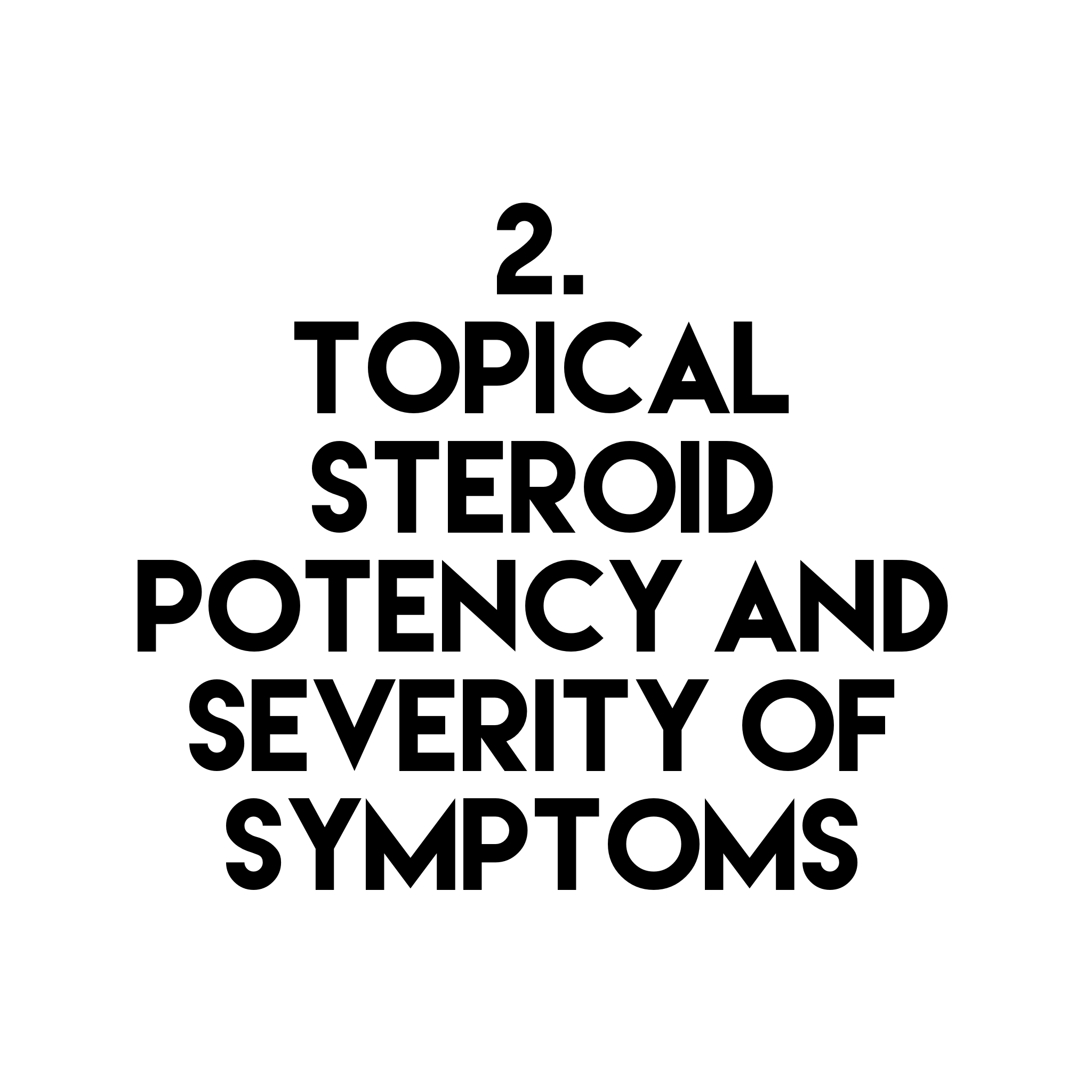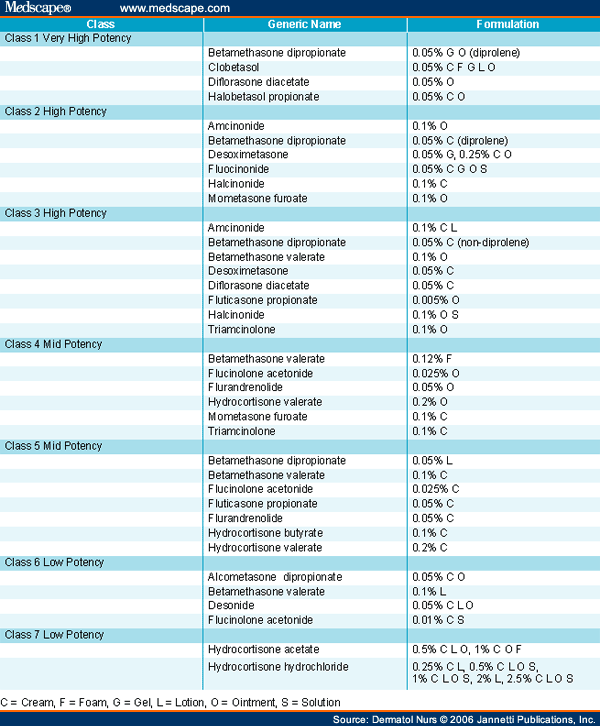How do symptoms vary according to the potency of steroid used?
Note: Please read my first article on how topical steroids affect our skin first so that you may understand fully the explanations below.
Classification of topical steroids
Topical Steroids are classified in various ways, depending on which country’s classification you are referring to. In this website I will be referring to the US classification system, where there are 7 classes of steroids, Class 1 to 7. Class 1 is the most potent and Class 7 is the least potent.
The potency of steroid is also affected by its consistency and formula. This is because the consistency and formula of the steroid can affect the absorption of the steroid into the skin. In general, ointments are more potent than creams and lotions. For example, Mometasone Furoate 0.1% ointment a.k.a. Elocon ointment is a Class 3 steroid, while Mometasone Furoate 0.1% cream a.k.a. Elocon cream is a Class 4 steroid.
You may simply Google to find out what class of topical steroids you have been using. There are typically 2 names on topical steroid tubes: 1. the brand name of the cream e.g. Dermasone 2. the name of the topical steroid e.g. Betamethasone Valerate. If the tube does not indicate steroid name, google the brand and find the steroid name then refer to the chart on the left to figure out its potency.
Potency of steroids and TSW symptoms
In general, the higher the potency of steroid used, the more severe your symptoms will present upon withdrawal:
Class 1, 2 and 3 - Intense redness, burning and itch, intense flaking, oozing, intense fatigue, insomnia
Class 4 and 5 - Intense redness, burning and itch, flaking and roughness, some fatigue, insomnia
Class 6 and 7 - Mild redness, mild burning, itch, not very noticeable roughness
The main difference between the Class 1, 2 and 3 steroids and the milder potency ones is the severity of the symptoms and the oozing.
It is worth noting that topical immunosuppressants can also cause a withdrawal, usually equivalent to the withdrawal from a class 3 and more potent topical steroid. This is because topical immunosuppressants also suppress skin cell proliferation directly when applied on the skin. An example of this is tacrolimus.
The symptoms can also spread to other areas of the skin where topical steroids are not applied. This is because the skin is one organ, and skin cells can be affected by one another through their signalling. Affected areas usually spread to about 20cm away from the areas where TS is applied.
Frequency, amount and duration of application
In general, the longer you used TS for, the longer your withdrawal will be. The amount applied to the skin as well as the duration and frequency matters. Someone who applied topical steroids for 5 years every once a month will have less severe symptoms and a shorter withdrawal than someone who applied it every day for 5 years.
I used high potency steroids regularly for a long time, does that mean I am doomed?
The first thought upon finding out that the topical steroids you’ve used are of high potency would be to panic and feel doomed about your recovery. Let me assure you that you are not doomed, and you can and will recover. The skin will always work towards recovery and it will not stop or give up. Remember that your body is always working for you, and you will be fine. It is therefore important to keep informed and learn about how to take care of your skin appropriately to heal as quickly as possible.
To understand why we flake, itch, ooze, and experience a whole slew of symptoms, read Withdrawal Symptoms Explained.
[The information referred to in this article was sourced from Skin Health Centre. https://www.skinhealthcentre.sg].

